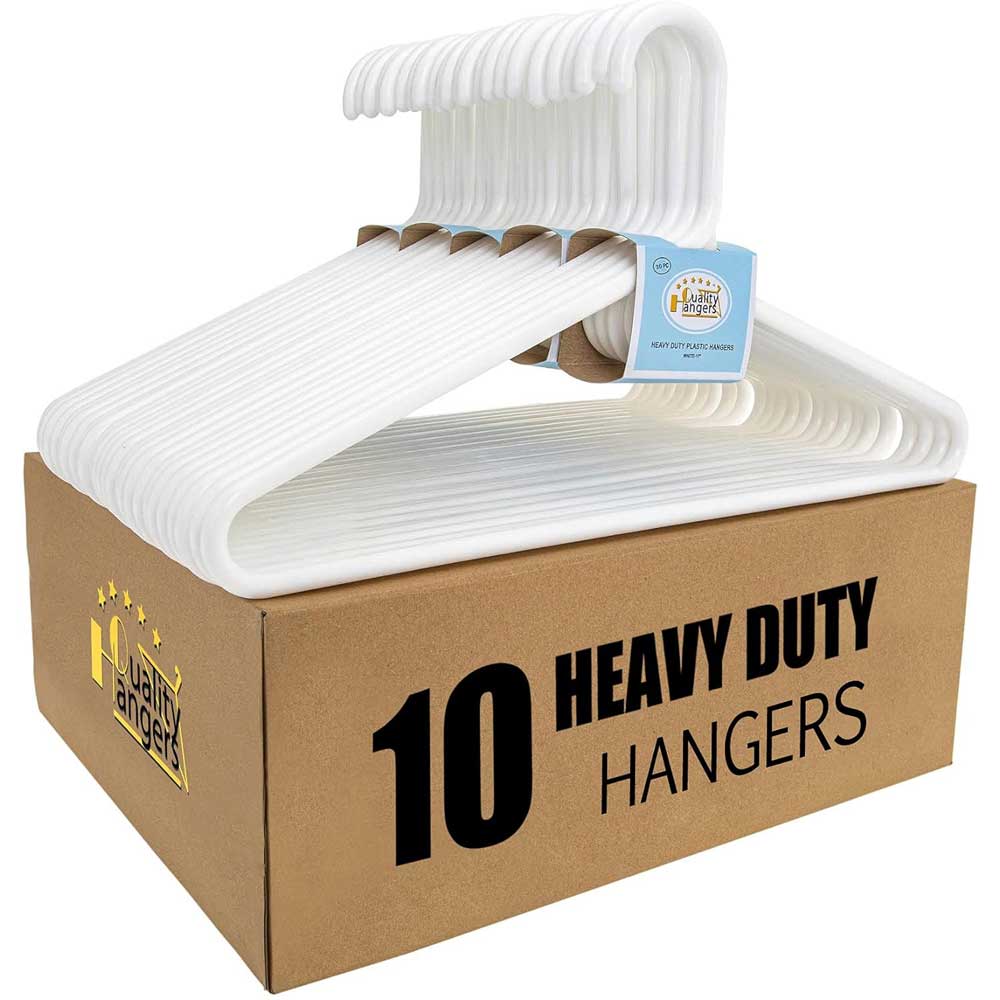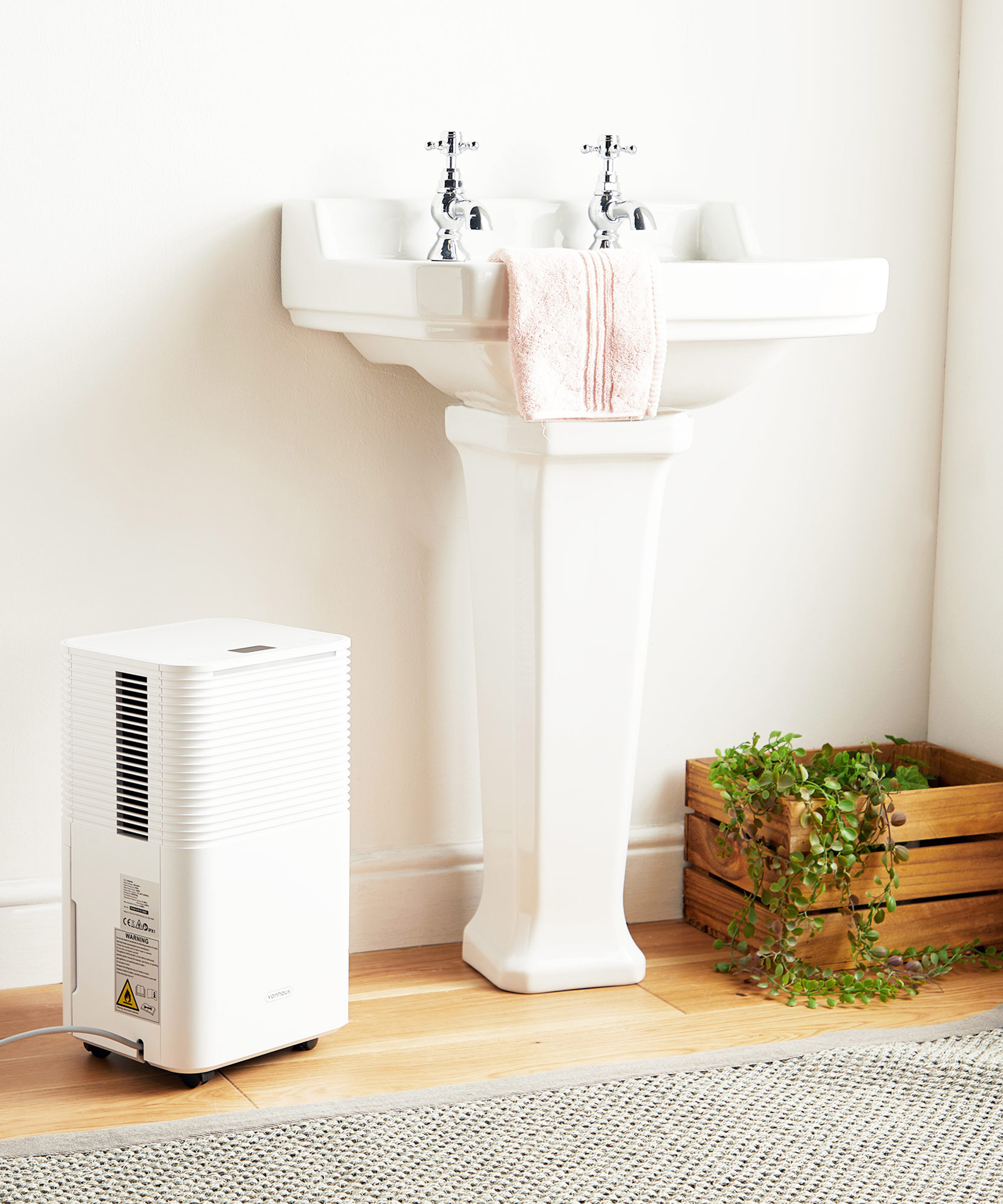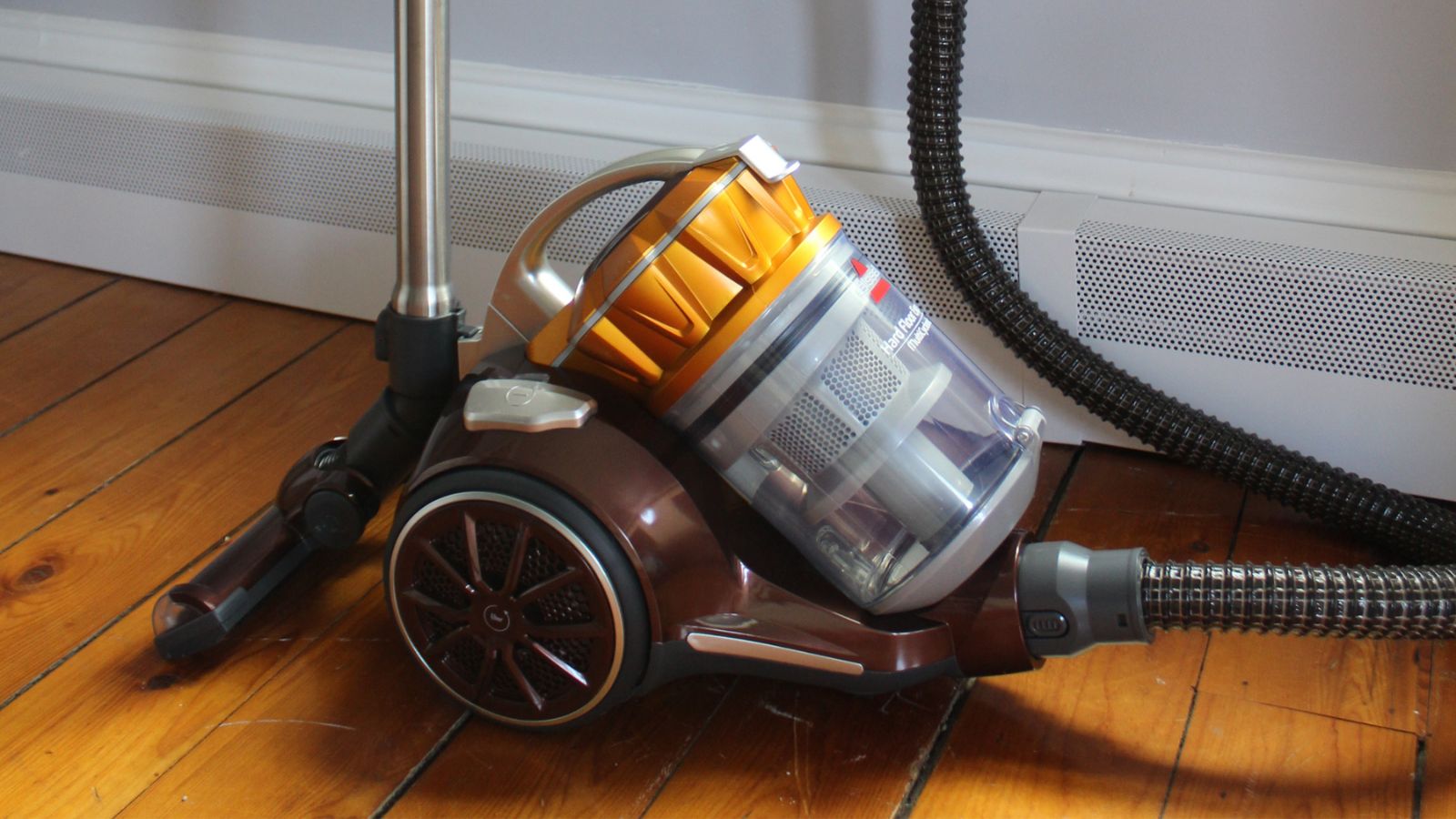7 brilliant ways to dry bedding quickly in winter – to avoid days of damp
These experts tips will dry out your freshly laundered bedding faster in winter


Nothing quite beats the satisfaction of freshly washed sheets billowing on the line, nor the crisp, clean smell they give off when neatly stacked in the linen closet. However, once winter hits, drying bulky bedding outdoors isn't always feasible.
While soggy bedding hanging around the house not only ruins the overall aesthetics of a space, it can also lead to other, more worrying issues, such as damp and mold.
Though smaller laundry items can usually be dried pretty easily indoors, when it comes to bedding, some smart laundry tips are needed if you want to avoid draping it all over the house where it stays damp for days and ends up smelling a little fusty. Our cleaning pros reveal 7 brilliant ways to dry bedding dry faster.
Expert ways to dry bedding quickly in winter
While you might have mastered how to do laundry, getting bedding dry indoors in winter can be a real headache, but the first thing to ensure is adequate air flow.
'When winter hits and it’s too cold to brave the outdoors, drying bedding indoors is the only way, as long as there’s enough ventilation,' says Rhonda Wilson, the quality lead cleaner at FreshSpace Cleaning.
1. Use the 'three-hanger method'

Just as when looking into how to dry clothes inside in winter, the way in which you hang wet bedding is key to drying it out faster and Rhonda Wilson has a great tip on how to do this.
'My go-to method for big sheets needs three hangers,' she says. 'First, I clip two corners of the sheet to one hanger. Then, I drape the middle part of the sheet over a second hanger to keep it off the floor. Clip the other two corners to a third hanger. This truly works without fail. The sheet is evenly supported, gets plenty of air circulation, and dries faster than if it was just bunched up. As for pillowcases, you only need one hanger and two clips.
'Put them on the clothesline and separate properly just so they have enough space,' continues Rhonda. 'If you have an air circulator, turn that on to keep air flowing.' This is also a great way to effectively dry a duvet without a dryer, too.

Unlike many plastic hangers on the market, these thick hangers have been designed not to sag, bend or break under pressure and so would be perfect for the three-hanger method of drying bedding.
2. Keep load sizes smaller

Filling your washing machine to the brim and expecting bedding to emerge well-spun is totally unrealistic, however much of a temptation it might be in order to reduce the number of cycles you run. Instead, look into how to wash bed sheets in a more effective manner.
'Washing in a smaller load will help the washer spin out more of the moisture that it absorbs during the wash cycle,' explains Parima Ijaz, a textile expert and the founder of Pure Parima. 'This also makes it easier to dry in the dryer, even at a low setting (which we always recommend) because there is less fabric to dry.'
Overfilling your washer can also mean laundry won't get cleaned properly as detergent cannot be effectively distributed. The experts at Bosch recommend filling it no more than 3/4 of its capacity, but if your aim is to get bedding dry quicker, less than this would be even better.
The absolute maximum should still allow a hands-width gap at the top of the drum.
3. Use your drying rack strategically

Including an indoor drying rack into your laundry room ideas is the obvious way to dry wet bedding indoors during the winter, but its positioning and location will play a huge role in how quickly it dries out.
'Use a drying rack placed in a warm, well-ventilated area with low humidity – perhaps near a radiator or space heater – to speed up the process, or circulate the air with a desk or ceiling fan,' advises Tandy Avery, vice president of product development at LUXOME. 'Make sure the material is spread out evenly and be sure to flip the bedding regularly to allow maximum air circulation and faster drying times. If you do not have a drying rack, use the backs of chairs.'
'Shake out your sheets and pillowcases well to get rid of excess moisture, then hang them up in an area with good airflow,' adds Marten Carlson, a sleep product expert and certified sleep science coach at Mattress Clarity. 'If you can, put them near a sunny spot inside to help them dry faster.'
A heated drying rack, available from Amazon, will also speed up the process and mean less time you'll have to spend looking at damp laundry.

Not all clothes drying racks can take large sheets and other items of bedding, but this one can be extended up to 79 inches making it perfect. It is also really sturdy so can hold the weight of wet blanked and duvet covers – plus it folds neatly away when not needed.
4. Maximize your dryer's efficiency

While many of us now try to minimize how often we use our dryers in a bid to save on household bills and be a little kinder to the planet too, they can be something of a lifesaver during winter.
That said, when you do use your tumble dryer, make sure you are getting the very most out of it and avoid any common tumble dryer mistakes.
'With bedding, always use a delicate cycle with low heat so as not to shrink the material,' warns Tandy Avery. 'You could also add a few dry towels to the load, which can help absorb moisture and speed up the process.'
Maintaining your appliance and cleaning the dryer vents regularly will help, too.
'When using the dryer, consider tossing in some wool dryer balls to help fluff the bedding which will improve airflow and speed up the drying time,' adds Parima Ijaz. 'Separate all the pieces to avoid any tangling which can affect the efficiency of the drying process.'
We love these Smart Sheep Wool Dryer Balls from Amazon which come in a pack of six and also work to soften clothes and bedding.
5. Keep your home well-ventilated

Looking into ways to improve ventilation in your home will not only help your bedding dry out quicker in winter, but it can also help problems such as damp and mold from becoming an issue.
'To dry your bedding quickly in winter, when drying it outside isn’t an option, focus on well-ventilated indoor spaces,' says Marten Carlson.
Parima Ijaz has a few additional tips here.
'You can line up your dining chairs all facing the same way in a row to make a makeshift line and hang your bedding on the backs to dry,' she says. 'For even quicker drying, leave the window open a bit to allow for ventilation and release moisture faster and more efficiently.'
6. Invest in a dehumidifier

If you have been considering buying a dehumidifier now could just be the right time – they really can speed up drying times when hanging bedding indoors to dry. If you are asking do dehumidifiers help with mold at home, then the answer is yes, so investing in one will slash the chances of damp and mold developing in the room you use to dry laundry.
Aim to choose a model that offers a 'laundry mode'. Laundry modes set dehumidifiers to filter out excess moisture before releasing it out back into the room at a warmer temperature, all while running on the highest fan speed and lowering the overall relative humidity.
To really get the most out of the laundry drying capabilities of your dehumidifier, keep the door to the room closed.
Punteha van Terheyden, head of Solved, swears by her dehumidifier. She says, 'Mine is small but mightly, and when I am drying laundry indoors, I place my dehumidifier right next to it. Make sure the air intake vent is facing your laundry and keep the doors and windows closed. It reduces drying time by many hours, if not a whole day.'

Punteha recommends this small but great value dehumidifier for laundry rooms. It has a large 1800 ml capacity for water collection, auto-shut off and multiple handy timer settings.
7. Add an extra spin cycle to your wash

Before taking your clean, wet bedding out of your washer, you want to get it as dry as possible as this will drastically cut down on on how long it takes to dry.
'Use an extra spin cycle in your washing machine to remove as much water as possible before drying,' suggests Tandy Avery.
To get the most out of this additional spin cycle, choose one with a high rpm - the higher the rpm, the more water will be removed from the load. Do check laundry symbols though and be aware that some fast spins could damage delicates and might leave bedding more creased than if you were to use a program with a lower rpm.
FAQs
Will bedding dry outside in winter?
Can you dry laundry outside in winter? This largely depends on the weather conditions – if it is raining or snowing outside then the answer will obviously be no.
On a clear and preferably breezy day, hanging bedding outside in the morning will make the most of the sun's peak intensity. It is also a good idea to use a portable drying rack so that you can move it to follow the sun's path during the day.
You might also like to consider constructing a covered outdoor drying area that offers shelter from the elements yet allows good ventilation.
Fed up with the task of washing and drying clothes and bedding. Check out our expert ways of making laundry easier to take the hassle out of this essential chore.
Sign up to the Homes & Gardens newsletter
Design expertise in your inbox – from inspiring decorating ideas and beautiful celebrity homes to practical gardening advice and shopping round-ups.

Natasha has been writing about everything homes and interiors related for over 20 years and, in that time, has covered absolutely everything, from knocking down walls and digging up old floors to the latest kitchen and bathroom trends. As well as carrying out the role of Associate Content Editor for Homebuilding & Renovating for many years, she has completely renovated several old houses of her own on a DIY basis.
-
 Nate Berkus says slipcovered sofas are back on trend – and I just found a way to create this designer-approved laid-back look from just $86
Nate Berkus says slipcovered sofas are back on trend – and I just found a way to create this designer-approved laid-back look from just $86This classic style is making a strong comeback, but did you know you don't have to buy a whole new couch to get this Nate-approved look?
By Eleanor Richardson
-
 Gardeners are putting pasta in bird feeders this spring – but there is one important warning you need to know before following suit
Gardeners are putting pasta in bird feeders this spring – but there is one important warning you need to know before following suitCooked pasta can be a nutritious snack for birds, but serving it in the wrong way could cause them harm
By Tenielle Jordison
-
 I'm an expert vacuum tester, and no, you really don't need a mattress vacuum – here's what to use instead
I'm an expert vacuum tester, and no, you really don't need a mattress vacuum – here's what to use insteadBefore investing in a new gadget, the tried-and-true methods still work
By Dan Fauzi
-
 Should you dry your clothes outside if you have hayfever? Allergy specialists warn sufferers to steer clear of this 'major trigger'
Should you dry your clothes outside if you have hayfever? Allergy specialists warn sufferers to steer clear of this 'major trigger'Doing so can trigger asthma, coughing, itchy eyes and more
By Sophie Warren-Smith
-
 'It's not something I'm willing to budge on' – shoes on vs. shoes off, what type of household are you?
'It's not something I'm willing to budge on' – shoes on vs. shoes off, what type of household are you?Our professional cleaners are all in agreement on this one, but would you consider a switch?
By Ottilie Blackhall
-
 Bissell Hard Floor Expert canister vacuum review – if your home has smooth floors, this is all you need
Bissell Hard Floor Expert canister vacuum review – if your home has smooth floors, this is all you needAs the name suggests, this canister vacuum works wonders on hard floors, but even a low-pile rug is too much of a challenge
By Camryn Rabideau
-
 I tried this one easy dishwasher trick and made the annoying need for manual drying a thing of the past
I tried this one easy dishwasher trick and made the annoying need for manual drying a thing of the pastIf you hate those little pools of water left on your cups and crockery, this towel trick is for you
By Punteha van Terheyden
-
 5 freezer cleaning mistakes you must avoid – or risk compromising your food quality and shortening the lifespan of your appliance
5 freezer cleaning mistakes you must avoid – or risk compromising your food quality and shortening the lifespan of your applianceAvoid these blunders for a safer kitchen
By Seraphina Di Mizzurati
-
 If your home's facade is riddled with cobwebs, this $12 tool makes cleaning once-unreachable spots simple and speedy
If your home's facade is riddled with cobwebs, this $12 tool makes cleaning once-unreachable spots simple and speedySay goodbye to cobwebs and hello to a fresh and clean facade
By Rebecca Shepherd
-
 I tried the Pomodoro Technique to blast through my spring cleaning to-do list – now I'll always rely on it to banish procrastination
I tried the Pomodoro Technique to blast through my spring cleaning to-do list – now I'll always rely on it to banish procrastination25 minutes is more than enough to make a real difference
By Ottilie Blackhall